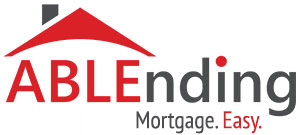Amortization Mortgage
What is an amortization mortgage? If you’ve bought a house before, you probably have an idea what amortization mortgage is. But as far as details are concerned, amortization mortgages just escape those who don’t have a solid financial education background.
Amortization Mortgages: What the experts say
According to Philip Russel, assistant professor of finance at Philadelphia University, an amortization mortgage is “the systemic payment plan – such as a monthly payment – so that your loan is paid off over the specified loan period.”
Based on his given definition, we can therefore safely conclude that an amortization mortgage is an amount of money that is to be paid off by a certain date. Paying off an amortization mortgage is usually done in equal monthly installments. One example of an amortization mortgage is one that involves your car loan or your home loan. Your credit account however cannot be considered an amortization mortgage since it does not involve a fixed date for payoff.
In an amortization mortgage, payment is divided into two portions – one for the interest cost and the other for the principal amount. The principal amount is the money originally borrowed from the amortization mortgage lender. The interest is the percent growth of the money as time goes.
Amortization mortgage interest is computed based on the current amount owed. Thus the longer you’ve been paying for an amortization mortgage, the lower the interest becomes.
Negative Amortization Mortgage: Pros and Cons
Payment plans for an amortization mortgage are usually based on adjustable rate payment loans. Adjustable rate amortization mortgages are loans where the amount you pay depends on the rise or fall of interest rates.
Some types of adjustable rate amortization mortgages offer payment caps than interest rate caps. This basically limits the increase amount of your monthly payment on your amortization mortgage and makes your loan negatively amortized. If interest rates rise to the point that the interest due cannot be covered by your monthly amortization mortgage payment, the unpaid amount will be added into the loan balance, increasing it over time.
For instance, the payment cap of your amortization mortgage is 7.5%. With a monthly amortization mortgage payment of $1,000 and rising interest rates, your new payment would normally be $1200/month. But with an amortization mortgage with capped payment, you would only be paying $1075 and the other $125 gets added to your loan balance.
But this setback of a negative amortization mortgage can be counteracted if you choose to pay the additional amount now and not wait for its payoff overtime. Another advantage of negative amortization mortgages is that cash flow is more easily controlled. Remember that with an adjustable rate amortization mortgage, interest rates may go lower depending on the market. Natural inflation will allow you to pay back the money you borrowed today at a depreciated value years from now.
Most adjustable rate amortization mortgages have interest rates that will adjust every six months, once a year, every three years, or every five years. Interest rates of negative amortization mortgages can adjust monthly.

Leave A Comment